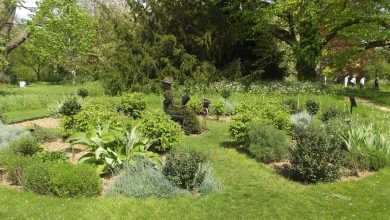What are Bioaggressor Organisms: Everything you need to know

Hello to all agrohuerters! Many of you may have never heard the name » bioaggressor organisms «, however, it is a term that is beginning to be widely used in other countries.

What are bioaggressor organisms?
Bioaggressors are all those living organisms that attack cultivated plants and are likely to cause crop losses. It is a very broad term that we can use to include in a single word the pests, diseases and weeds that attack our crops.
These organisms produce damage, which are the symptoms that we can observe in plants. For example: necrosis, bites, galleries, dry leaves, etc. The consequence of these damages can be translated into qualitative losses (lower quality fruits and leaves: less flavor, aesthetic damage) or quantitative losses (less harvest).
Classes of bioaggressor organisms
Bioaggressors comprise all the «enemies» of crops and can be classified into 3 large families:
- Pathogens: Causes of plant diseases.
- Pests – predators or parasites of plants
- Weeds: plants out of place, or that grow where they are not wanted, and that compete with man for possession of the soil.
Next, although we have already talked about them in many other articles, we are going to further define these large groups:
1. Pathogens
Pathogens are all factors capable of causing a disease in plants. There are two types of pathogens:
Exogenous Pathogens
Exogenous pathogenic agents: They can be physical (heat, cold, trauma,…), chemical (toxic,…) or also biological (bacteria, parasites, fungi, viruses,…).
We have already talked about some pathogenic biological agents in some articles such as Prevention and ecological treatments for diseases caused by fungi or plant diseases caused by viruses.
Endogenous Pathogens
Endogenous pathogens: They can be metabolic or immunological

2. Crop pests
As you all know, the pest term refers to animal organisms that attack cultivated plants, causing, in turn, economic losses. Pests can cause direct or indirect damage as they are disease vectors.
These organisms can be classified into several groups: mammals, birds, nematodes, arthropods and molluscs.
We have already seen in past articles that each crop has characteristic pests (For example: « broad bean pests and diseases») although there are also polyphagous pests that can affect many different plants, as we saw in typical and more harmful pests for the orchard. Each pest produces different damage that we can observe in plants with a little patience.
Below you can see an insect known by the name of «crickettopo» (scientific name: Gryllotalpa gryllotalpa) that despite not being a very common insect, can cause great damage to crops.

3. Weeds in the garden
There are at least 250,000 species of flowering plants in the world. Of this wide range, 3,000 are used by humans somewhere for their food needs. However, only 300 of these species have been domesticated for agriculture and 50 of them are the fundamental ones in the diet of our species. Around 8,000 species of plants can behave as weeds, 250 of them being highly problematic.
Therefore, we could define weeds as:
Plant that forms populations capable of entering cultivated, markedly disturbed, or human-occupied habitats and potentially depressing or displacing resident plant populations, which are deliberately cultivated or of ecological and/or aesthetic interest.
One of the main characteristics of weeds is the production of an enormous amount of seeds like. Numerous authors have made estimates about the number of seeds that can be in an area of soil. This number will depend a lot on the type of medium on which the study is carried out, and may vary between 30,000 and 350,000 seeds per square meter.
They can be classified according to several criteria, for example according to their biological cycle in annuals, biennials, perennials and perennials…
If I had to highlight any genre, the Poaceae (better known as grasses) from the agricultural point of view is the most important. Some examples are: avena, bromus, lolium, phalaris, cynodon, digitalaria, shorgum, setaria, or echinochloa.
Next, you can see a photo of Cirsium arvense:

You can find more information about weeds in last week’s article: Weeds: prevention and control methods in organic farming.
Control of bioaggressor organisms
The main objective of managing bioaggressor organisms is to limit the economic losses they cause. To carry out this management, several control techniques must be used. These techniques include control:
- Cultural: Based on modifying the farming system
- Genetic: It consists of choosing resistant or tolerant varieties to bioaggressors.
- Chemical through the use of chemical products such as insecticides, acaricides or fungicides.
- Biological through the use of living organisms.
- Physical which includes all mechanical, thermal or electromagnetic techniques.
References
- Naylor, R.E.L. (2003). WEEDS- Weed Seed Biology. Editor(s): Brian Thomas. Encyclopedia of Applied Plant Sciences. Elsevier.1500-1508.
- Abrol, D., Shankar, U. (2016). Chapter 20 – Integrated Pest Management. Editor(s): Surinder Kumar Gupta. Breeding Oilseed Crops for Sustainable Production,
Academic Press. 523-549. - Patriarca, A., Fernández, V. (2018) Alternaria. Reference Module in Food Science, Elsevier.
This is all for today, I hope you liked the article and that you have become familiar with the term bioaggressor organisms.
Have a nice day!

![Photo of Anemone: [Cultivation, Irrigation, Care, Pests and Diseases]](https://www.complete-gardening.com/wp-content/uploads/2022/08/anemone-cultivation-irrigation-care-pests-and-diseases-390x220.jpg)


![Photo of Types of Substrates: [Concept, Characteristics, Natural and Artificial]](https://www.complete-gardening.com/wp-content/uploads/2021/06/sustrato_1586759129-390x220.jpg)